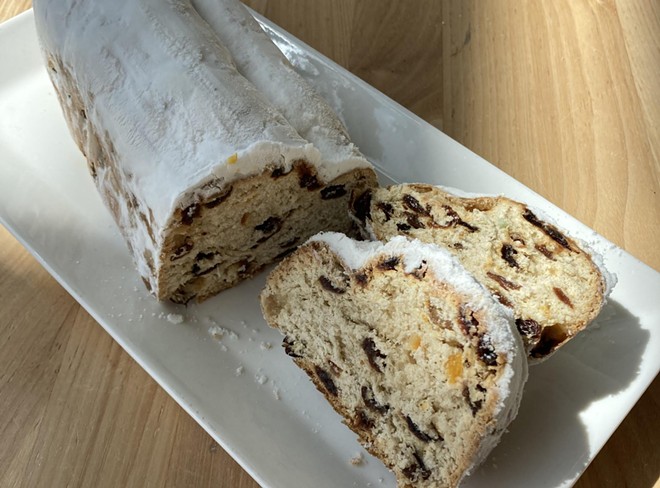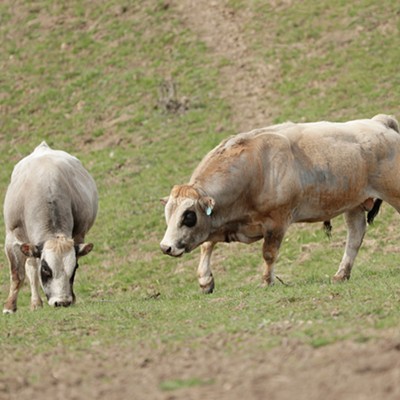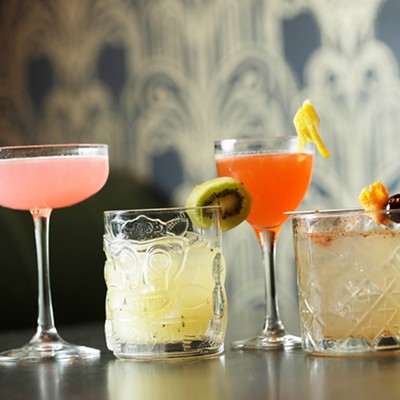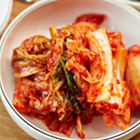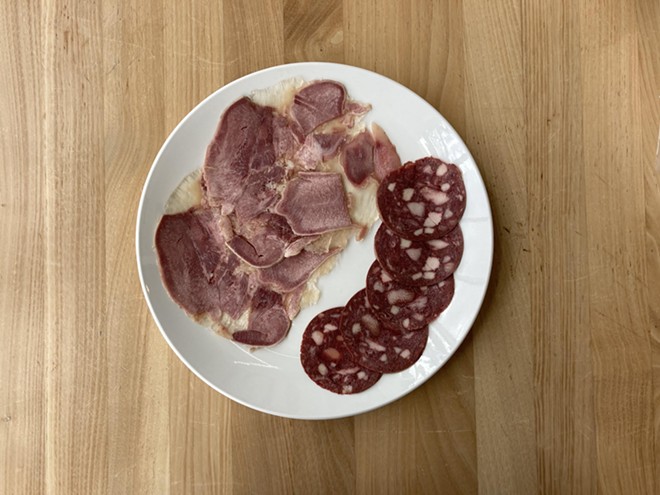
This is an installment of the Inlander's yearlong project "Around the World in 80 Plates," a quest to find 80 foods and drinks in the Spokane area representing 80 different places. Read the introduction to the project here.
Count of dishes/places: 28
My grandfather loved peanut butter and onion sandwiches. He was a German and Irish farmer in the Midwest, who told me when I was a teenager that my obnoxiously wide feet meant I had a good foundation. My grandmother's parents only spoke German, were part of a strict German Lutheran community on the Great Plains, farmed through the Dust Bowl and the Great Depression, and raised 13 kids while they were at it.
Central Europe, and parts of the world with lots of central European immigrants like the American Midwest, can get a bad rap food-wise. These were people for whom food was sustenance first and foremost, and often too scarce. They were zero-waste butchers and bakers because they had to be. My grandparents were taught to be thankful for what they had, even if it was a smear of peanut butter and a crunchy onion between two thin slices of white sandwich bread.
Not to say there wasn't celebration. Somehow, my grandmother still learned traditional German cookies and cakes, from pfeffernüsse at Christmas to rhubarb kuchen in the spring. Traditional German baking that's heavy on flavor and light on sugar is still my favorite style of baking.
Most of my grandparents' palate seems to have passed on to me. So I stopped by Alpine Delicatessen on Third Avenue in Spokane to pick up some authentic German delicacies. The shelves of the import shop are stocked with European teas, coffees, candies, cookies, vinegars and baking supplies. The lunch counter offers wildly popular, freshly made sandwiches by Andrea Lejeune-Weiler, a German transplant, baker, and indispensable asset to the German community in Spokane.
But I bypassed all this deliciousness and went straight to the most fascinating part of the shop: the deli case.
HEAD CHEESE AND BLOOD SAUSAGE FROM STUTTGART

Head cheese and blood sausage aren't just German. Their origins are just as impossible to pin down as the origin of sausage in general— a lot of places had to figure out how to preserve the less-than-desirable cuts of meat, and they all pretty much came up with the same concept.
Head cheese is typically credited to Europe in general, maybe Scotland in particular. But giò thủ is sometimes considered Vietnamese head cheese, and other countries are sure to have their own variations. The preservation of coagulated blood is almost as common.
Head cheese isn't actually cheese, in case you haven't caught that yet. It's a meat jelly made by boiling the head of a pig. No, it doesn't use the brains. Traditionally, the tongue, jowls, and other trimmings were boiled with the ears of the pig, which provided the gelatin that would congeal and bind all the scraps together.
It's a technique that's been around since the Middle Ages. Bartolomeo Platina wrote about head cheese in De honesta voluptate et valetudine, or, On honest indulgence and good health, a collection of recipes from 1465 considered the first cookbook ever written. Even though head cheese was considered a peasant food, he recommended it to anyone in any class looking to stay healthy.
Centuries later, Ferdinand Schaller began as a sausage apprentice. In the early 1900s, Schaller began butchering in Stuttgart, a city in southwestern Germany. Then, Schaller took his basics and knives across the country, honing his skills all through Germany. But as the economy tanked after the first World War, Schaller decided to cook on a boat and travel the world. When he finally landed in Manhattan, he opened a European-style deli on the Upper East Side with a new friend, Tony Weber.
Schaller & Weber officially opened in 1937, and pretty soon after became a New York icon. The two immigrants never knew their brand would eventually get endorsement from some of America's top culinary celebrities like Martha Stewart and Anthony Bourdain.
Schaller & Weber remains popular in the New World by keeping with the Old World traditions that Schaller learned in Stuttgart. One of the head cheeses at Alpine Deli is a Schaller & Weber product made with pure pork trimmings and a thin, clear gelatin.
When it's served on a piece of warm toast, the gelatin melts into a soft, savory spread between the meat and bread, the woman at the counter tells me. It's milder than some hams, and just as tasty on a cold sandwich or cracker.
Schaller & Weber's blood sausage is just as delicious, much to my surprise. It's got bits of pork and beef in it, only spiced with black pepper. It's about the same texture as bologna, but has a deep, savory flavor that's much more satisfying. I'd choose it on a charcuterie board any day. Plenty of uninitiated people might assume it's a less greasy salami and be delighted.
STOLLEN FROM DRESDEN
Sitting in front of the counter at Alpine Deli was a completely unexpected treat. As I waited for the head cheese to get sliced, I checked that I wasn't, in fact, dreaming. There, along the edge of the cold case, were half a dozen stollen lined up in a row. Stollen, a traditional German Christmas bread, hitting the shelves at the beginning of spring?
Stollen originated as part of a fast, not a feast. According to origin history recorded by the European Commission, the first written reference to stollen is in an invoice from St. Bartholomew Hospital in Dresden. In 1474, the hospital billed a patient for stollen, a simple loaf of wheat, yeast, and water. Twenty years earlier, the Catholic church had made a decree banning the use of butter or milk in any baking during Advent, a traditional season of fasting for the Christian church. The simple, dry stollen obeyed.
Prince Ernst, the elector of Saxony, was not thrilled with the boring bread. He wrote to Pope Nicholas V requesting an exception from the butter ban for his bakers. Pope Nicholas V refused. The butter battle lasted 40 years (quite a Biblical number) until Pope Innocent VIII wrote a "Butterbrief" that allowed only Dresden stollen bakers to bake with butter during Advent.
Stollen quickly became a popular Christmas treat, commonly referred to as "Christstollen" by 1530. Dresden bakers started offering Christstollen to their rulers every year. After they added butter, bakers also started adding other bits of sweetness, like raisins and marzipan, in the dough and dusting the top with sugar. The shape and color is said to refer to the swaddled Christ child.
As the reputation grew, so did the loaves themselves. In the 16th century, eight bakers and some extra helpers gifted a 40 pound stollen to their elector. In 1730, over a hundred bakers made a monster stollen that weighed close to two tons.
But the loaves at Alpine Deli were not Dresdner Christstollen. No, they were spring stollen from Schlünder, a bakery from the other side of the country from Dresden.
Schlünder added citrus flavorings and candied orange peels to the stollen, but also a whole new chapter to stollen history. If the sweet bread is beloved at Christmas, why shouldn't it be included in Easter festivities, too? (This especially makes sense in Germany, where Easter season is almost as culturally significant as the Christmas season, religious or not, unlike in the U.S.)
I, for one, am with Schlünder. The yeasty, lemony, sugar-dusted bread seems like the perfect spring loaf to me, no offense to the Christ child. Plus, I'm always one to celebrate carbs no matter what season it is.
Now, I'm just wondering how long it will be before someone makes a 2-ton loaf of spring stollen. Alpine Deli, I'm looking at you. ♦
Have an idea for what I should eat next? Wanna make me a traditional dish from your hometown, or parade a huge baked good around Spokane? Send 80 Plates tips and ideas to [email protected].


